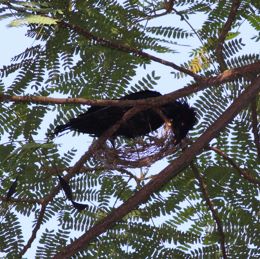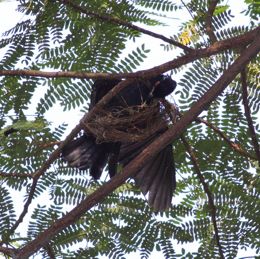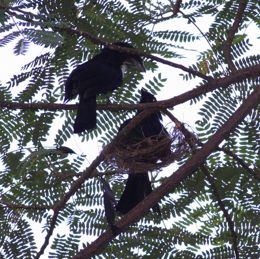Huang Chee Thong a.k.a bloodlamb documented a pair of Greater Racket-tailed Drongos (Dicrurus paradisus) actively building their nest high up on the bare branches of a tree. The pair had already dropped their rackets.
As the sexes cannot be distinguished, it cannot be established whether it was the male of the female that constructed the nest. Or for that matter, whether both participated in nest building.
The nest was actively being constructed, with the bare outline nearly completed. The tough pliable stems, most probably of climbers, have been used to attach the nest edge to the branch fork. The completed nest is a woven cup with the base not completely closed, allowing the eggs to be seen from below. Sometimes, spiders’ silk are used to bind the nest together
This post is a cooperative effort between NaturePixels.org and BESG to bring the study of bird behaviour through photography to a wider audience.












3 Responses
as with many things, if you have enough time and enthusiasm, there are often ways to work around problems in field biology. I have found that individuals often have [very subtle] plumage features that are slightly different from the the other individuals of the species in the area. If you are only dealing with a handful of individuals specifically (like the pair Drongos), then it may be possible to at least tell these two apart, one from another. Then, with some luck, you might see something in the future that gives away the gender (like copulation). You could then work this back to your field notes to tell which individual spent the most time actually building the nest (at various stages) – this is another great way that photos can be used in field biology
Happy birding
Dale
http://alpinebirds.blogspot.com
Thanks for the tip Dale.